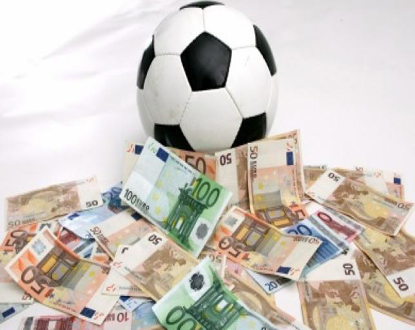At the time of Business Football, the weight of figures is crucial in determining the financial health of a championship. Deloitte has analyzed the financial state of football for the 2011/2012 season with projections for the future. A much-anticipated report to understand the economic stakes of football.
The English championship (Premier League) is far ahead in terms of revenue and turnover generated per club. The total revenue for English clubs has risen by 16%. A significant gap of more than one billion euros separates it from the Bundesliga (German championship), which ranks second ahead of Serie A (Italy) and La Liga (Spain) thanks to an explosion in sponsorship for clubs.
The total turnover of the Bundesliga reached 1.9 billion euros, marking the highest growth in European football (+7%). This is not expected to end soon as television rights are constantly increasing (+50%) for the 2013/2014 season. This attractiveness is developed thanks to the excellent results achieved by German clubs on the European stage.
Behind, the Spanish La Liga is struggling. The two big Spanish clubs hide the financial misery of Iberian football. Together they represent 56% of Spanish football’s revenue, amounting to 1 billion euros. A logical figure given the considerable position these two clubs hold nationally and internationally. However, discussions continue in Spain about transitioning to a collective television rights model and a more equitable distribution. Most Spanish clubs suffer from significant debts that contrast starkly with Real Madrid and FC Barcelona.
In steady decline, Serie A appears dependent on television revenue, which accounts for 59% of clubs’ total revenue, or 0.9 billion euros. Only Juventus of Turin resists the financial turmoil of Italian football, primarily with the help of the Juventus Stadium. A stadium owned by the club, generating massive revenue through an attractive commercial policy for fans.
And what about France?
Ligue 1 saw its revenue reach 1.29 billion euros in 2011/2012, an increase of 9%. A misleading figure, as Paris Saint Germain under Qatari ownership, with 220 million euros in revenue, more than doubled its turnover year-on-year (+120%). The capital’s club is far ahead of other French clubs, which saw a decrease in revenue by 25 million euros.
A sad observation can be made for clubs like Lille, Lyon, or Bordeaux. A club like Lyon, a seven-time champion of France, is forced to sell its best players to maintain financial balance. The sale of young Anthony Martial for 5 million euros to Monaco symbolizes the disparity between the nouveau riche and the rest of the championship.
Despite this, the good form of French football is expected to continue with Monaco’s arrival and Paris St Germain’s desire to assert itself at the European level. Euro 2016, hosted in France, should also allow various clubs to increase their revenue and capitalize on the sometimes costly construction of stadiums. The Deloitte report highlights the real difficulties football faces in managing its expenses. Except for England and Germany, all other championships have a wage policy for players that is too high compared to the clubs’ actual budgets. A financial chasm is forming, making sporting results vital for some clubs.
Currently, there are few solutions to remedy this problem. Many advocate for the introduction of a salary cap for players, allowing the regulation of club payroll inflation. However, this project seems challenging to implement given the significant role money now plays in football. Meanwhile, players benefit from the arrival of new wealthy entities with unlimited spending and questionable motivations.


